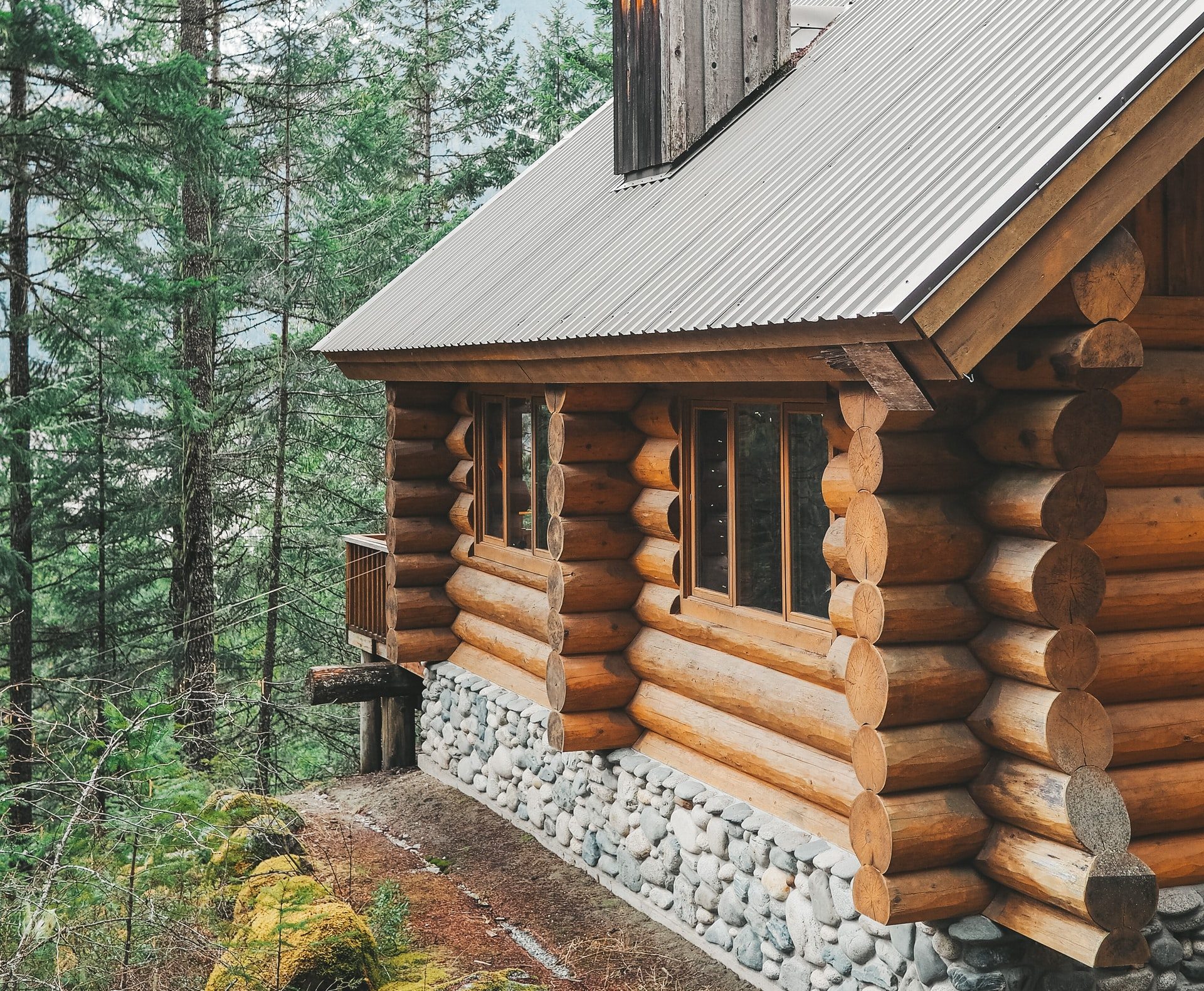When we see a log cabin, the first impression we get is that it’s the most natural and sustainable way to live in a house. However, there are naturally some concerns about the heat. Wooden logs don’t seem like they provide the needed warmth, right?
Do logs insulate well?
The answer is a surprising yes; logs are pretty good at insulating by nature.
Of course, there’s more to it about log cabins. And that’s what we’ll be discussing in the following article. We’ll tell you how to get a log cabin to hold heat.
Do Logs Insulate Well?
The short answer is yes; logs are good insulators. They have natural air pockets that trap the heat inside or the cold in other cases. That way, the cabin maintains its temperature on the inside.
However, different types of logs may insulate differently, and there are other factors to consider.
Generally, if you want your log cabin to hold heat, it’s better to insulate it. We’ll walk you through all the details you need to know about insulating your house and its importance.
How Well Do Logs Insulate? What Is R-Value?
Insulation is the act of preserving heat and warmth within the cabin. Technically, the word means trapping the heat inside, not escaping it.
Some people refer to log cabins as ‘thermal batteries’ as they absorb heat throughout the day, then keep it within the cabin walls throughout the night. The act prevents the heat from escaping through them.
To measure log insulation, we use the ‘R-value of wood. It tells us the thermal heat of insulation for every inch of wood thickness, which is 1.41 in most wood types. This confirms that the thicker the log, the higher the range of insulation.
When choosing the thicker logs to guarantee higher insulation, you should also pay attention to the type of wood being used.
Logs have air pockets, and that’s how they carry cold and hot air to keep a consistent temperature. Usually, logs are ‘seasoned,’ which means they’re left in a dry and closed space to ensure they’re ready for use and can insulate well.
The most effective wood types are the light, dry ones. Generally, the woods’ conductivity increases as their density increases.
Here’s a roundup of the best-insulating types.
- Cedar
- Spruce
- Pine
- Fir
- Larch
Why Do Log Cabins Need Insulation?
Though logs are naturally good insulators compared to other natural materials, you shouldn’t only depend on them for warmth—especially through those harshly cold winter nights out in nature. Logs tend to expand and shrink in extreme cold and hot weather.
Accordingly, the logs will create small cracks where the hot air or moisture will get through. And this is where insulation comes in.
By insulating these cracks and any other cracks that may pile up, you’re making sure that the heat stays within the cabin.
Being all-natural comes with a cost, such as some common problems that come with the natural insulation and log cabins. Some of which include:
- Infestation because some small insects will live among the timber.
- Moisture problems like ‘R-value of wood that may come from rain and humidity.
How to Get a Log Cabin to Hold Heat
There are a couple of ways to insulate your cabin, and the kit you’ll need should include the following:
- A utility knife
- Foil tape
- Foil-backed insulation rolls
- A very strong staple gun
- Insulation boards
- Damp proofing membrane such as the Tyvek
- Fiberglass insulation rolls
Most experts recommend insulating your floor and roof. We’ll be telling you how to insulate your floors in the following steps.
First, install a damp proofing membrane, which is a material that prevents moisture from moving up the walls by capillary action.
Second, start placing thin pieces of wood to raise the log cabin off the ground—kind of like stilts. This will help make sure the area elevated is away from any moisture.
Third, secure insulations with battens and joists, keeping a gap about 50mm wide between the membrane and the beginning of the insulation boards. This will allow the air to flow better, drying up any moisture that may get through.
Fourth, cut out the insulation material to cover up any cracks or openings made by the joists and battens.
Your flooring can then be directly installed on top of it. However, keep in mind that the insulation has to be at least 50mm deep to be effective.
Another extra step you can do to make sure your cabin holds heat well is to double glaze your windows. These aren’t a norm as they’re considered an extra expense unless the owner thinks they’re necessary.
Tips to Keep In Mind
- You have to make sure that all areas where heat might escape are effectively insulated with material and secured in place with tape.
- The basis of a well-insulated cabin is essentially the flooring and the roofing.
- Natural log cabins require higher maintenance and checkups from time to time to ensure that the insulation is in place and effective. That’s to make sure no damage gets through to the actual cabin itself.
Conclusion
Remember that though the process might be intimidating at first glance, insulating your cabin has more pros than cons. And to be frank, the first time around might be a hassle; however, the maintenance will be easy with the appropriate follow-up.
Make sure you’ve taken into consideration all the key points about insulating your roof and floors to ensure your log cabin holds heat throughout those cold winter nights.
Not only will you be able to follow these steps yourself, but you’ll also know your way around if you’re hiring a professional to do it. It’s always better to get a full understanding of what you want to be done to prevent getting scammed.

